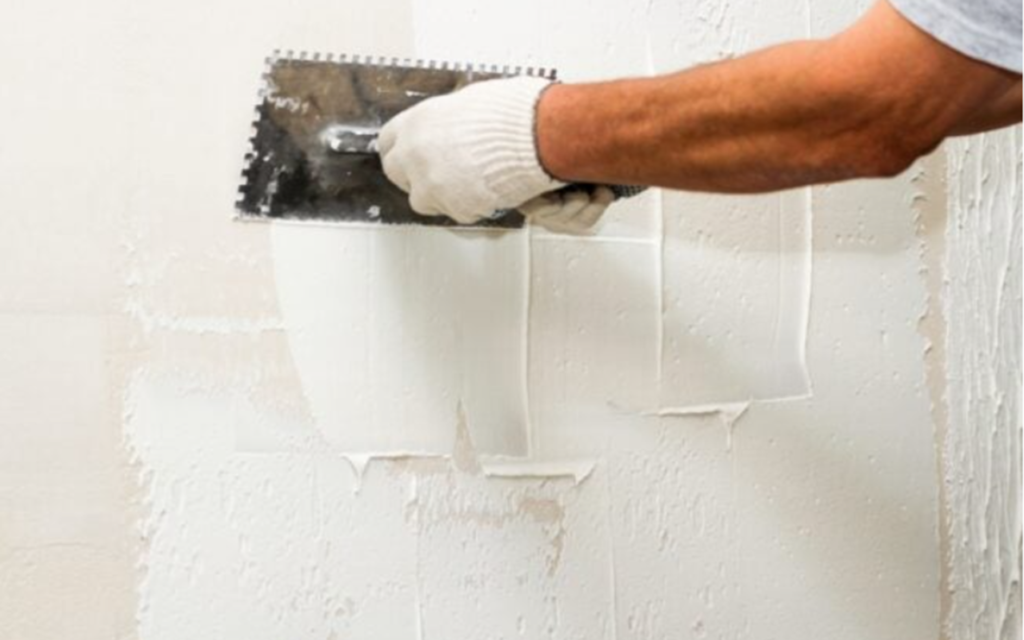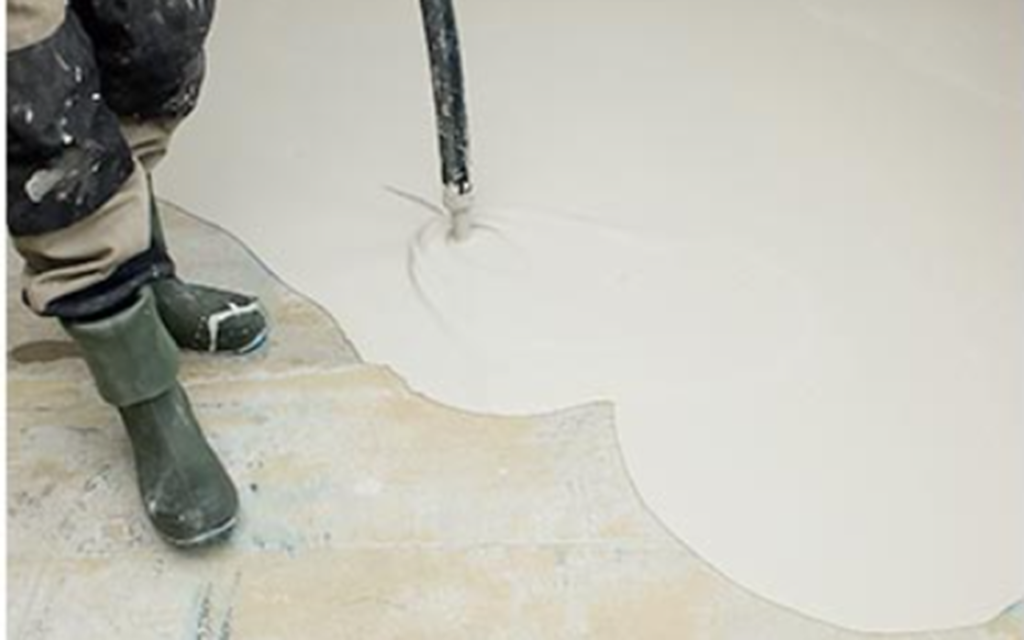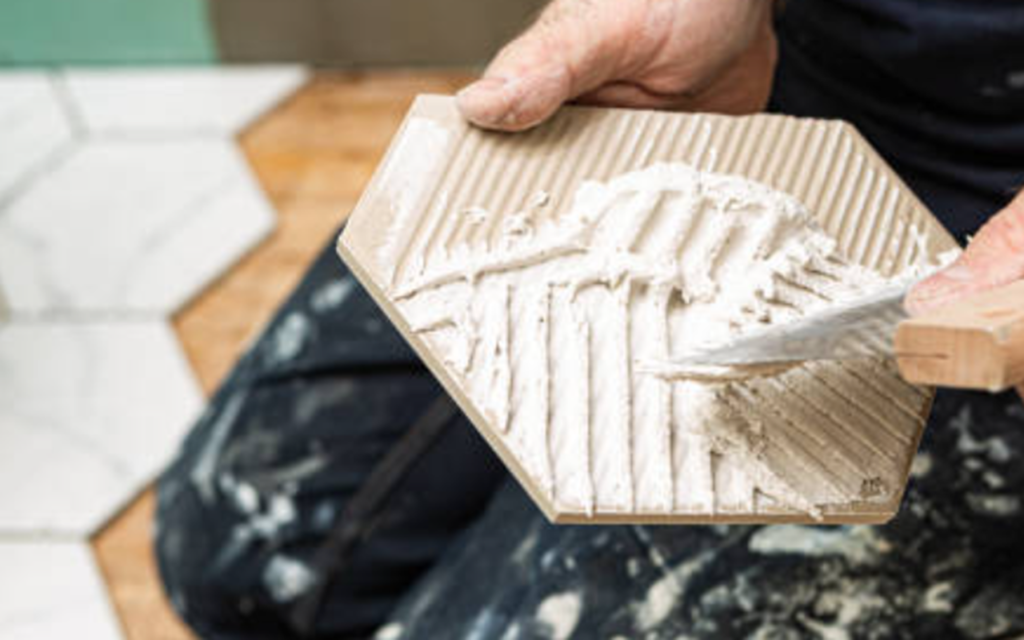There are two systems of cementitious materials, namely inorganic cementitious materials and organic cementitious materials. Inorganic cementitious materials such as cement can bond aggregates to form a rigid framework, while organic cementitious materials can endow the rigid framework with cohesion properties and dynamic behavior, as well as improved bonding to difficult-to-bond substrates.
Synthetic polymer emulsions are used to modify mortar which called a two-component system, that is, mineral adhesive powder in bags and liquid polymer adhesive in containers. In the practical application of this kind of two-component polymer-modified cement mortar, there is still the problem that it is difficult to control the amount of polymer emulsion added accurately if the amount is too high or too low, which will change the technical characteristics of the mortar performance, resulting in mortar performance failing to meet the requirements. In addition to the difficulties and risks of handling, two-component products also present cost and logistical issues. Due to the problems mentioned above in the modification of mortar by polymer emulsion, the development and application of redispersible polymer powder products are promoted, and the single-component dry-mixed mortar produced by redispersible polymer powder products makes construction operations easier, packaging, storage, and transportation are also more convenient, and it is also very beneficial to protect the environment.
- Types and performance requirements of Redispersible Polymer powder
Redispersible Polymer powder refers to a spray-dried polymer emulsion and is subsequently processed and performed as a type of organic gelling material with adhesion and flexibility. It is mainly used in construction, especially dry-mixed mortar, to increase cohesion.
Common types of Redispersible Polymer powder on the market include ethylene and vinyl acetate copolymer powder (EVA), ethylene, vinyl chloride, and vinyl laurate ternary copolymer polymer powder (E/VC/VL), vinyl acetate and ethylene and higher fatty acid vinyl ester ternary copolymer polymer powder (VAC/E/VeoVa), vinyl acetate homopolymer polymer powder (PVAc), and pure acrylic polymer powder (PAE).

Ethylene-vinyl acetate copolymer powder (EVA) is leading globally and represents the technical characteristics of Redispersible Polymer powder. Regarding specialized experience in polymers used for mortar modification, it is still the best technical solution.
Main physical properties of Redispersible Polymer powder
| Item | Index | Item | Index |
| Solid content | (99±1) | Main colloidal particle distribution | 1~7 |
| Ash content | (10±2) | minimum film forming temperature | 0 |
| Volume density | (490±50) | Film appearance | transparent, elastic |
| appearance | White powder | Ph value | 7~8 |
| Protective colloid | polyvinyl alcohol | ||
| Particle size | Greater than 400 | self-combustion | 225 |
Redispersible Polymer powder can be combined with other inorganic gelling materials (such as cement, slaked lime, gypsum, etc.) as well as various fine aggregates, fine fillers, and other additives (such as methyl hydroxypropyl cellulose ether, starch ether, cellulose fiber etc.) are physically mixed into dry-mixed mortar. When adding the dry-mixed mortar to water and stirring under hydrophilic protective colloid and mechanical shear force, the polymer powder particles will be quickly dispersed into the water enough to distribute to form a film thoroughly. For example, when applying dry spraying concrete for repairing purposes, the dry mortar with Redispersible Polymer powder and water are mixed on the construction surface for only 0.1s at the end of the nozzle, which is enough to make the Redispersible Polymer powder fully dispersed and film-formed. In this early mixing stage, the polymer powder has begun to impact the rheology and workability of the mortar. Due to the different compositions of the polymer powder, the properties, and modifications of the polymer powder itself, the impact will be additional, and some have rheology. The effect of denaturation, while some have the effect of increasing thixotropy. The mechanism of its influence comes from many aspects, including the impact of the Redispersible Polymer powder’s affinity for water during dispersion, the effect of the different viscosity after dispersion on the increase in the air content of the mortar, and the distribution of bubbles. Due to the impact of protective colloids, the effect on cement and water, the interaction between Redispersible Polymer powder and other additives, and the effect of the interaction between its additives and other additives, in short, using different Redispersible Polymer powder will bring out various functions such as increasing fluidity, increasing thixotropy, and increasing viscosity.
It is generally believed that the mechanism by which Redispersible Polymer powder improves the workability of fresh mortar is: Redispersible Polymer powder usually increases the gas content of the mortar and thereby lubricates the fresh mortar; especially its protective colloid, reacts to water when dispersed the affinity, and subsequent slurry viscosity, improves the cohesion of the construction mortar and thus improves workability. After the fresh mortar containing Redispersible Polymer powder dispersion is formed, as the moisture decreases at three levels, namely, the absorption of the base surface, the reaction consumption of the hydraulic material, and the volatilization of the surface layer into the air, the resin particles gradually approach and the interface slowly fuzzy, the resins merge and eventually polymerize to form a film. The process of someday becoming a continuous polymer film mainly occurs in the mortar’s pores and the solid’s surface.
The process of polymer film formation can generally be divided into three stages. In the first stage, the polymer particles move freely in Brownian motion in the initial emulsion. As the water evaporates, the movement of the particles is naturally more and more restricted. The interfacial tension between water and air prompts them to align together gradually. In the second stage, the network-like water evaporates through capillaries when the particles begin to contact each other. The high capillary tension exerted on the particle surface causes the deformation of the polymer spheres and causes them to fuse. The remaining water fills the pores, and a film is roughly formed. The third and final stage is the diffusion of polymer molecules to create a genuinely continuous film. During the film formation process, the isolated movable polymer particles are consolidated into a new film phase with high tensile stress. To enable the Redispersible Polymer powder to form a film in the hardened mortar, the minimum film-forming temperature (MFT) is required.

Lower than the curing temperature of the mortar. If this process is irreversible, the polymer film will not be redispersed when it reencounters water; the protective colloid of the Redispersible Polymer powder – polyvinyl alcohol – must be separated from the polymer film system, which is not a problem in an alkaline cement mortar system because polyvinyl alcohol will be saponified by the alkali generated by cement hydration. At the same time, the adsorption of quartz materials as fine aggregates can also cause polyvinyl alcohol to disappear from the system gradually. The membrane formed by dispersing the Redispersible Polymer powder separated from the system without the hydrophilic protective colloid, which is insoluble in water, can function under dry and long-term water immersion conditions. Of course, in non-alkaline techniques (such as gypsum or only fillers), since polyvinyl alcohol still partially exists in the final polymer film, it can affect the water resistance of the polymer film, but these systems are generally not used. In the case of long-term immersion in water, and the polymer still has its unique mechanical properties, it does not affect the application of Redispersible Polymer powder in these systems.
With the formation of the final polymer film, a framework system composed of inorganic and organic gelling materials is formed in the cured mortar, which is a brittle and hard skeleton composed of hydraulic materials and Redispersible Polymer powder in the gaps and solid surfaces—an flexible network consisting of films. Since the tensile strength of the polymer resin film formed by latex powder is usually more than one order of magnitude higher than that of cement-based materials, it can enhance the tensile strength of the mortar. Since the flexibility and deformation ability of the polymer are much higher than cement’s. With the rigid stone structure, the deformation performance of the mortar is improved, and the effect of dispersing stress is also greatly improved, thus improving the crack resistance of the mortar.
As the Redispersible Polymer powder increases, the entire system develops toward plastics. In the case of high-osmotic powder, the polymer phase in the cured mortar gradually exceeded the inorganic hydration product phase and the mortar. A qualitative change has occurred, and it has become an elastomer. At the same time, the hydration product of the cement has become a “filler.” At the same time, the film formed by dispersing the Redispersible Polymer powder distributed on the interface can play another crucial role, that is, increasing the adhesion to the materials in contact, which is suitable for some difficult-to-stick base surfaces with extremely low or no water absorption (such as the surface of smooth concrete and cement materials, the surface of organic materials like steel plates, copper bricks, wood or plastics) is significant because the inorganic binder binds the material through the principle of mechanical embedding is achieved, that is, the hydraulic slurry penetrates the gaps of other materials and gradually solidifies. The above-mentioned difficult-to-stick surfaces cannot effectively penetrate the material to form an excellent mechanical embedding, so only mortars with inorganic adhesives cannot achieve practical bonding effects. The bonding mechanism of polymers is different, which is why other materials through intermolecular forces and do not rely on the porosity of the surface (of course, the rough base surface and increased contact surface will increase the bonding force ); this is even more prominent in the case of organic base surfaces. At the same time, the Redispersible Polymer powder containing ethylene has more outstanding adhesion to organic substrates, especially similar materials, such as polyvinyl chloride and polystyrene, which is more conducive to the application of polymer-modified dry-mixed mortar.
The mortar modified with Redispersible Polymer powder will obviously be improved in tensile strength, elasticity, flexibility, and sealing properties. It can form a polymer film and form part of the hole wall , thus playing a sealing role in the high porosity structure of the mortar. The polymer membrane has a self-stretching mechanism that exerts tension on its anchor point with the mortar. These internal forces keep the mortar together as a whole, thereby increasing the cohesive strength of the mortar. The presence of highly flexible and elastic polymers improves the flexibility and elasticity of the mortar. The mechanism by which yield stress and failure strength are increased is as follows: when force is applied, the formation of microcracks is delayed until higher pressures are reached due to improved flexibility and elasticity. In addition, the intertwined polymer regions also hinder the coalescence of microcracks into through-cracks. Therefore, Redispersible Polymer powder increases the material’s failure stress and failure strain.

The polymer film in polymer-modified mortar also plays an essential role in hardening mortar. The Redispersible Polymer powder distributed on the interface plays another critical role through dispersion and film formation, increasing the adhesion to the materials in contact. For example, in the microstructure of the interface area between powdered polymer-modified ceramic tile bonding mortar and ceramic tiles, the film formed by the polymer can form a bridge between the vitrified ceramic tiles with deficient water absorption and the cement mortar matrix. Under normal circumstances, the contact area between two different materials is a particularly high-risk area for shrinkage cracks to form and lead to loss of adhesion. It can be seen here that the ability of polymer films to heal shrinkage cracks plays a vital role in tile adhesives.
The action mechanism of Redispersible Polymer powder in mortar can be summarized as follows:
- The Redispersible Polymer powder forms a film after dispersion and can be used as a second binder to enhance bonding.
b.After the mortar system absorbs the protective colloid of the Redispersible Polymer powder, the film-forming polymer will not be destroyed by water or “secondary dispersed”;
c.The polymer resin after film formation is distributed in the entire mortar system as a reinforcing material, thus increasing the cohesion of the mortar;
d.The primary function of Redispersible Polymer powder in wet mortar is to improve construction performance, improve flow performance, increase thixotropy and anti-sag properties, improve cohesion, and enhance water retention;
e. The main functions of Redispersible Polymer powder after the mortar is cured are to increase the tensile strength, enhance the bending strength, reduce the elastic modulus, improve the deformability, increase the density of the material, enhance the wear resistance, and improve the internal It can increase the cohesion strength, reduce the carbonization concentration, reduce the water absorption of the material, and make the material hydrophobic.



